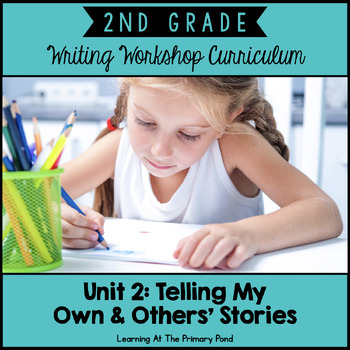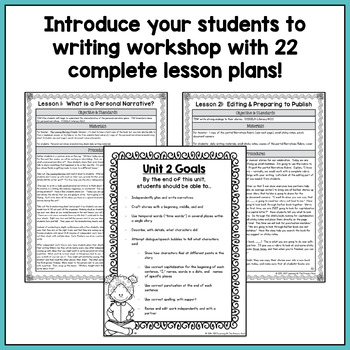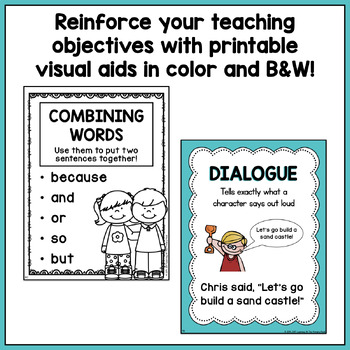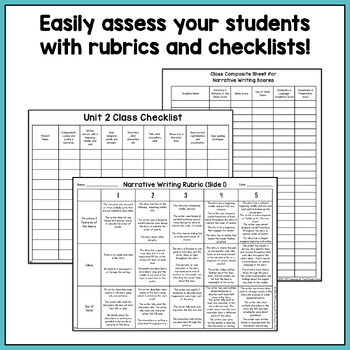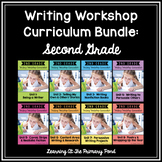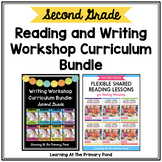Second Grade Personal Narrative Writing Unit | Second Grade Writing Unit 2
- PDF
What educators are saying
Also included in
- Make it easy to plan your writing instruction with this yearlong bundle of narrative, opinion, and informational writing lessons for second grade! This complete second grade writing program also includes posters and visuals, assessments and writing rubrics, and grammar/language arts activities thatPrice $53.85Original Price $71.75Save $17.90
- This writing and reading bundle for second grade gives you lesson plans and printable materials to help you implement the "workshop" approach! The workshop model is extremely motivating for kids because it allows for student choice. Your students will not only grow as readers and writers but also dePrice $105.53Original Price $150.75Save $45.22
Description
This 4 to 5 week personal narrative writing unit will help you teach your second grade students to write personal narratives (sometimes called small moments stories) and memoirs! This pack has everything you need, from complete writing lesson plans to writing paper to posters to writing rubrics and more.
The unit begins with students learning how to write personal narratives. Next, students complete a mini memoir project in which they tell a story from an adult’s childhood.
This personal narrative writing unit is designed to be taught toward the beginning or middle of the year but can be used anytime you want to teach students how to write narratives.
In this writing unit, students will learn how to:
- Plan and write a personal narrative on a single, focused topic
- Create a strong beginning and ending
- Add details to their writing to show what characters (people in a personal narrative) did, felt, and said
- Use temporal words to show the order of events and passage of time
- Choose specific words
- Describe the setting of a story
- Correctly use writing conventions
- Combine sentences
- Revise and edit independently and with a partner
This personal narrative writing unit includes:
- 22 detailed minilessons that will last a little over 4 weeks
- Daily language arts/grammar exercises that complement the minilessons
- Clear unit goals, daily objectives, and Common Core alignment
- Posters, visual aids, and materials to go with the minilessons (all color materials also have black and white versions included)
- Printable writing paper
- Writing stages display and materials to make a genre bulletin board
- A list of mentor texts to accompany the unit
- FAQs and important information to help you set up the writing workshop
- Rubrics, anecdotal note forms, and other materials to help you get organized
- A narrative writing rubric that you can use throughout the year
- 155 total pages of materials and resources
Please view the preview file before you purchase!
This is the second unit in an 8-unit writing curriculum series for second grade. Click {HERE} to view the complete curriculum.
By: Learning At The Primary Pond

